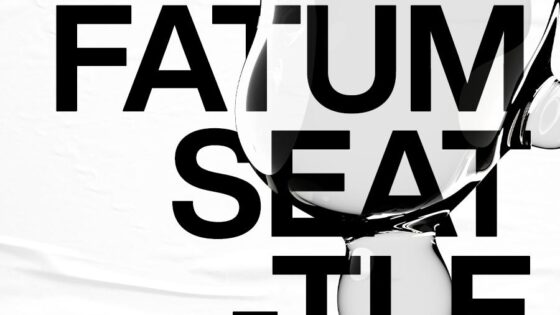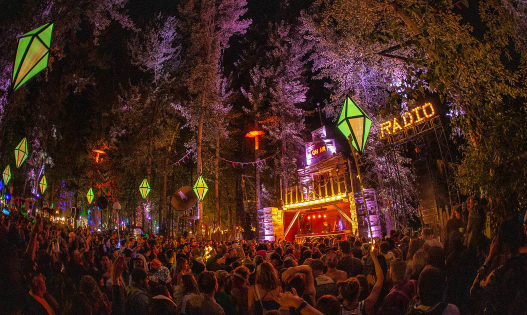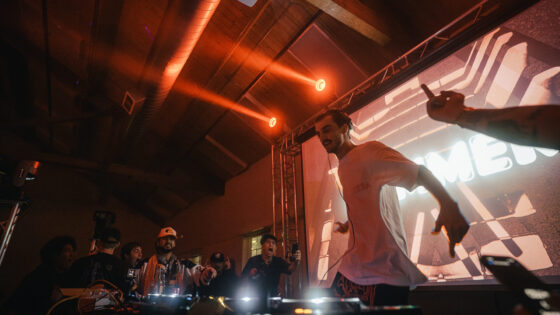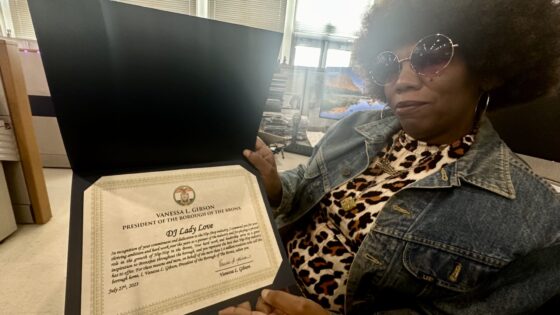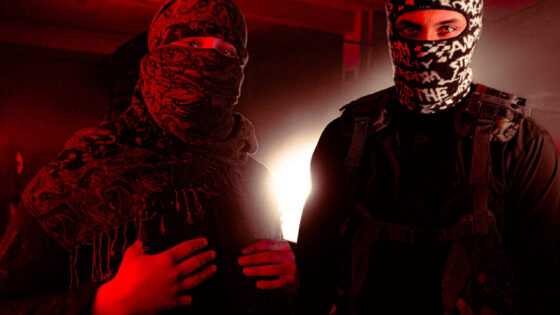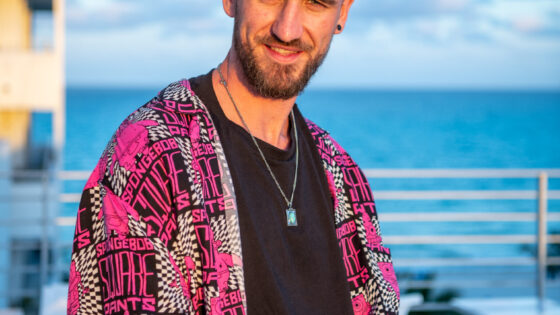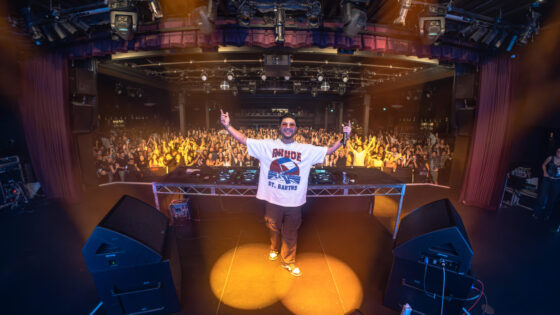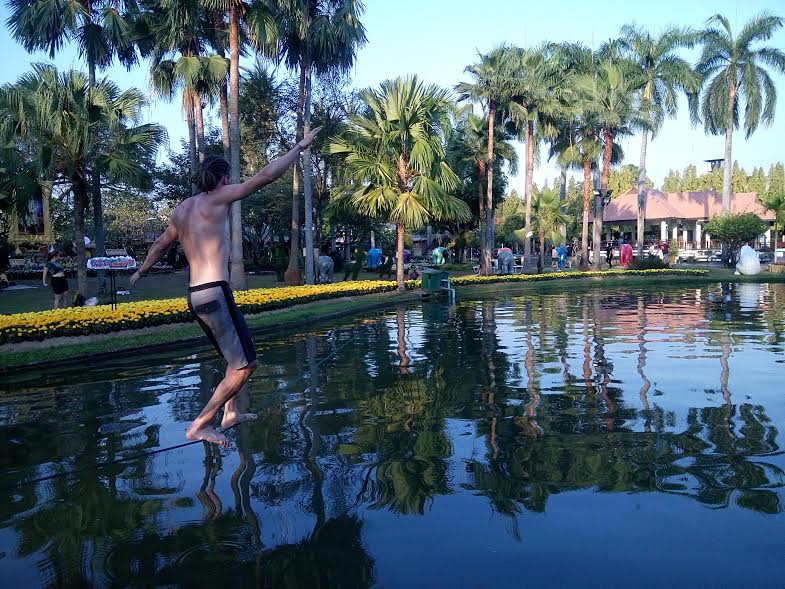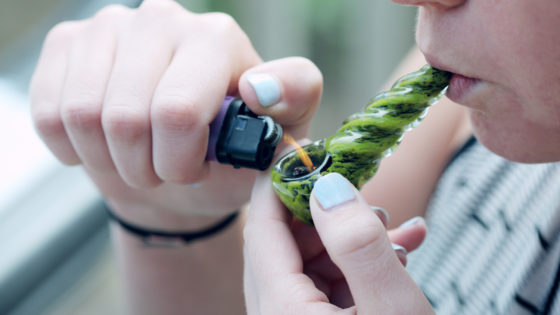Lucky for everyone, festival season is in full swing and there are many great festivals coming up. Festivals are great for many things, such as making new friends, while exposing yourself to new music and dancing. Have you wanted to take your dancing game to the next level? Step up your game, literally?
If you have ever been to a festival, you’ve likely seen people balancing on a flat-webbed line anchored to trees. This is the sport of slacklining, also known as “moving meditation.” We’re here to give you some background on the sport, as well as tips for people who are new to the world of slacklining.
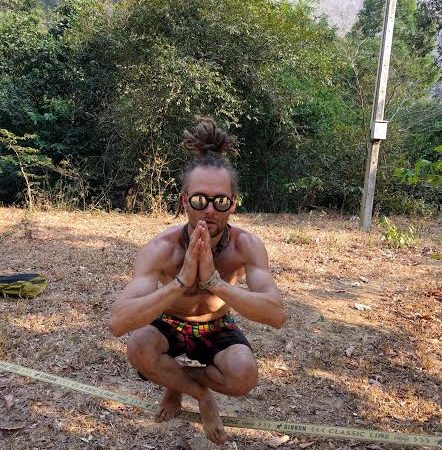
Photo Credit: Dustin de Jong
Originally started by mountain climbers wanting to improve their balance, slacklining developed into a sport for everyone. Many benefits in years of studies cited that slacklining reduced risk of injury for lower body ligaments and joints, improved mental focus, coordination, and posture. Plus, it’s a great stretch session after a night of dancing.
In many cases, it is used for rehabilitation purposes. An 87-year-old woman participated in a study to improve the outlook for patients that suffered a stroke. Her outlook was not improving and that’s when the doctors heard about the amazing benefits of slacklining. Through outpatient and inpatient therapy, she made gradual improvements in her motor function and balance. She ended up plateauing at 9 months, but the fact that she made improvements at all was amazing.
There are several versions of the sport, ranging from a city slackliner to highlining. Highlining is a more challenging form of slacklining. As the name implies, the line suspends on a high drop, either over mountains or above water. We’re going to focus more on park slacklining, as it is the most common style to place at festivals.
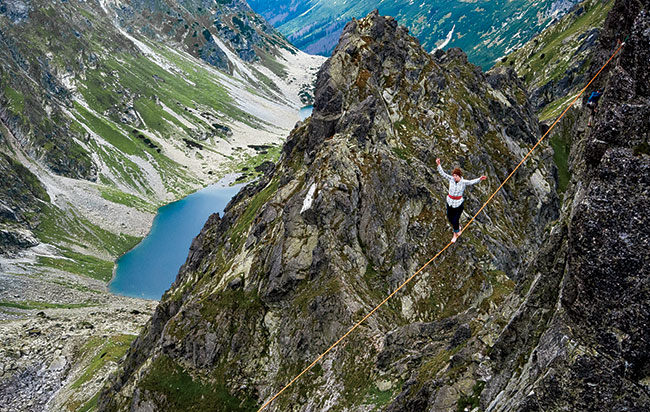
Photo Credit: Women’s Health Magazine
Slacklines consist of webbing composed of nylon or polyester (sometimes a hybrid of the two), giving it a lot of stretch and bounce. It’s usually 1/2 to 2 inches thick, and can set up anywhere with two solid supports. A point to mention: if you’re anchoring them on trees, please use protectors so the trees remain intact.
If slacklining is something that interests you, there are a few options in terms of gear. Full kits are relatively inexpensive to buy as they run between $50 to $100. If you’re not 100% sure you’ll like the sport, you can always ask a friend. If you want to try it out and see one at a festival, don’t hesitate to ask the people on the line. Slacklining is a very social sport, and participants are more than used to people gathering around to watch or ask questions. You can also search on the web for slacklining groups in your city.
Now, after setting up your line (or using someone else’s): how do you slackline? Like with learning anything new, the key is to just relax and have fun. You probably won’t go all the way across on the first try, or the second or the third. You can try it with or without shoes, but most people swear by going barefoot. It gives you a better sense of what the line is doing as you’re walking across it. Therefore, bare feet keep your equilibrium in check.
Remember how Mr. Miyagi (from the Karate Kid) was getting Ralph Macchio’s character to perform seemingly useless chores around the home? The most memorable one was “wax on/wax off,” which gave Macchio’s character muscle memory for blocking attacks. ‘Wax on/wax off’ has a useful application for slacklining, as it can make the difference between falling off the line and staying on.
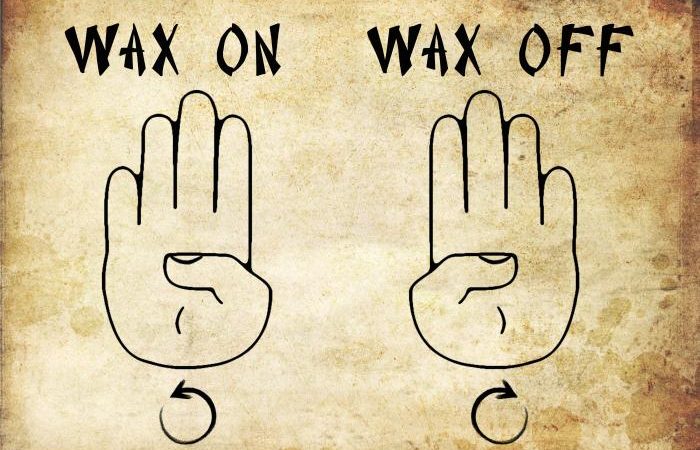
If you feel as though you’re leaning in one direction and can’t quite find your balance, this trick will help. If you’re falling too far left, use the wax on (motion illustrated above) to bring yourself back to center. Use wax off if you’re leaning too much to the right. Thanks, Mr. Miyagi!
Just like learning anything new, it can be nerve-wracking when you first step on the line, but after a number of tries, you’ll feel more comfortable. One of the main things to remember is that breathing deeply and focusing your mind are key to getting across. It takes some practice to get to that stage, but after a while, you’ll find that it’s second nature. It’s like riding a bike, and all you need to do is believe in yourself.
We hope to see you on the dance floor this summer (or perhaps trying out a slackline)! What are some additional tips from slacklining enthusiasts? Which festivals do you plan to bring your gear this year? Share your responses in the comments!
Important things happen in Pacific Northwest nightlife, and DMNW will send you alerts!









